The landscape of production agriculture has changed tremendously over the last century. We have morphed from a system of local trading and neighborly sharing to a commercial industry with a yearly contribution of more than a trillion dollars to the U.S economy alone. This change has allowed producers to continue to provide a sustainable food supply for the growing world population—but feeding the world has its challenges. At Southland Organics, we are committed to doing our part to bridge the gap between agriculture producers and consumers to strengthen understanding and acceptance of the agriculture industry.
A Balancing Act
One key challenge for the agriculture sector has been maintaining the delicate balance between meeting the demand for food while reducing environmental impacts to allow future generations the same opportunity. At its core, this means being a good steward of the environment: conserving resources when possible, using chemical interventions judiciously and preserving the land.
Coincidentally, most public criticism is centered around those same ideas. Things like level of water usage, dangers of chemical runoff and decreasing biodiversity of the soil lead the conversation. So, what are farmers and the agriculture industry doing about this? Do they care? Of course they do!
Water Usage

Take water for instance. Production agriculture accounts for more than 70% of the freshwater usage in the world. To put that into perspective, it takes about one and a half tons of water to produce one kilogram of grain and about 15 tons of water to produce one kilogram of beef, according to a report produced by the Food and Agriculture Organization of the United Nations. There is no denying that this amount of water usage is significant and can prompt some very justified concerns about water table depletion leading to water scarcity or unavailability.
But the important thing to remember is that when water becomes unavailable to you and me, it also becomes unavailable to the farmers. That would mean no irrigation for countless acres of row crops or drinking water for thousands of livestock animals. So it stands to reason that farmers would want to do their part to preserve available water sources just as much as we do!
Land
The same logic can be applied to the land—a farm is only as productive as its land allows. Soil that is nutrient depleted and lacks biodiversity will underperform every time when compared to well-managed farmland. For quite some time, this was encouragement for producers to douse their crops with fertilizers and other chemical interventions, but even that has proven concerning and has prompted regulation and industry-wide changes.
Changes Impacting the Agriculture Industry
Luckily, the agriculture industry is filled with individuals who are taking on the immense task of mastering our ability to rely on the environment while also respecting it. That goal gets more attainable every day due to legislative and regulatory developments and technological advancements.
Legislative and Regulatory Developments

Over the years, regulatory agencies have developed in response to concerns over environmental impacts. For instance, the Soil Conservation Service was founded in 1935 in response to land misuse that led to the Dust Bowl. After Congress enacted the National Environmental Policy Act, the Clean Water Act, and the Soil and Water Resources Conservation Act, the Soil Conservation Service was responsible in part for effectuating the legislature’s intent of protecting our environment and the American people. The agency was renamed the Natural Resource Conservation Service (NRCS) in 1994.
In 1970, the Nixon administration founded the Environmental Protection Agency (EPA) in response to growing concerns about pollution in city air and water sources. Today, these two agencies, along with the Department of Agriculture, are responsible for ensuring compliance with many of the regulations that govern the interaction between agriculture and the environment.
Technological Advancements
Along with legislative and regulatory developments, incredible advances in technology have allowed commercial farms to be more conservative in their approach to production. Things as simple as crop rotation and rotational grazing have revolutionized soil conservation. Precision agriculture is making it possible to apply things more judiciously, such as irrigation, fertilizers and pesticides, as well as more effectively assess the need for intensive tilling. Genetic selection of seeds has produced crops that require less water in times of drought, are resistant to common pests and are more productive. These changes have allowed producers to not only grow food products more efficiently but also become more effective stewards of their environment.
Bridging the Gap
All too often, the agriculture industry's use of natural resources is confused with abuse of natural resources. The reality is that without these key resources—clean air, flowing water and fertile land—there is no agriculture.
The level of production needed to sustain our growing population will not be possible without land capable of carrying that load. This is why agriculturalists of all kinds—whether they are farmers, ranchers, policy makers or researchers—have no choice but to improve. It’s in their best interest.
The agriculture industry today operates much more sustainably than we could have imagined 40 years ago. Thanks to decades of dedication, environmental conservation in the industry will continue to improve so that future generations can enjoy the same luxuries we do. While there are still improvements to be made and likely always will be, we should be proud of how far we have come and look forward to the improvements of the future.
Other Bridging the Gap Blogs
Can Subsistence Farming Feed Us All?
Conventional to Cage-Free to Organic Egg Production
The Definition of Greenwashing
Antibiotic Regulation in Food Animals
Contact Us
As always, we’re happy that you’re here and that we have the opportunity to share with you! If you ever have any questions, you can contact alyssa@southlandorganics.com or (800) 608-3755. To stay up to date on all of our content, subscribe to our YouTube channel and follow us on social media @SouthlandOrganics!






